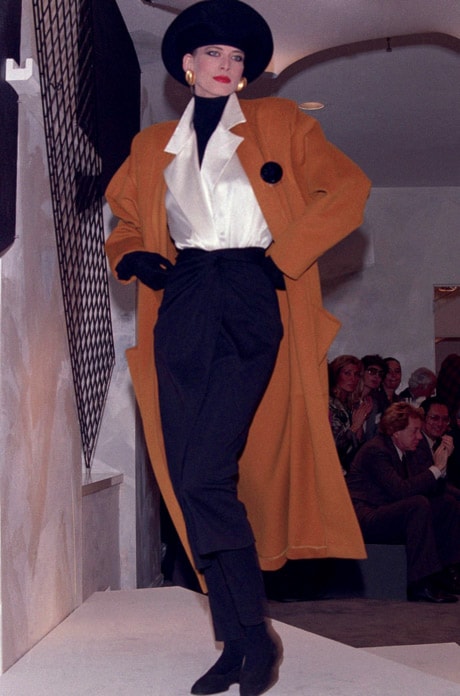NEW YORK — The workday uniform for most people has evolved in this post-suit, even post-business-casual world, but there remains a common thread through office outfits over the years: refinement.
Even if you’re someone who wears T-shirts and jeans, you probably choose the cleanest, crispest ones in the closet. The shoes are the ones with the fewest scuffs, and the sweater is without pills.
Polish, say the experts, still is linked to professionalism.
Today’s collective eye sees a more relaxed look as an improvement over a stuffy one, but there is a line that’s not to be crossed, says Shelley Fox, fashion professor at Parsons The New School for Design.
Whether it’s an official uniform required by an employer or an unofficial one — like the power suit, twin set or shirtdress have all been over the years — people use clothes to move them into a focused mindset.
“When I was working from home, sometimes I’d put on my heels,” Fox says. “Sometimes I had to dress in a certain way to get my head in a certain place.”
Work clothes also tie people together. Think about a noontime stroll on the street: You can tell if it’s a Sunday or a Monday based on the collective dress.
“Workplace fashion is how America developed its fashion industry. There was all this immigration coming in from Europe in the early 20th century, but the one thing they all wanted was to look ‘American.’
“The one thing that could unite them was their clothing,” says Fox, director of a new graduate program at Parsons that will consider workwear in relation to culture, society and politics. “A simple thing like a black suit made everyone fit together.”
Career clothes largely are the workhorse of the American closet — and the U.S. fashion industry.
While Paris has its reputation for haute couture, London for street fashion, and Milan, Italy, for sultry, sizzling styles, New York’s rise in stature as a fashion capital largely mirrored the increasing importance of a stylish office wardrobe, especially for women, in the 1970s and ’80s.
And, at the most recent round of women’s runway shows in New York, menswear-inspired separates were one of the hottest trends.
Where you’ll see the biggest difference from the office style of, say, 30 years ago is in the accessories, colours and fabrics.
Women are still drawn to that suit, and why not? says Mark Mendelson, president of the Ellen Tracy brand. It’s chic, easy and shorthand for “professional.”
But, he adds, there are very few women who’d willingly wear a perfectly matched blazer-and-skirt set every day.
“She might still wear the black suit to work on certain days with big meetings, but she’s not buying a closet full of them. She’ll buy a boyfriend blazer that works for that suit but can also work with multiple other things,” Mendelson says. “She decides how her day is going to be and plans accordingly.”
Her rotation might also include a buttery yet tailored leather jacket or boxy tweed jacket adorned with beading and ribbons that she could pair either with a pencil skirt or dark denim jeans. They’re items with personality, Mendelson says, without being sloppy.
The wardrobe flexibility that working women now enjoy is fairly recent, he adds.
In the ’60s and ’70s, it was the secretaries who gave the first impression of a business and that meant dressing up; in the ’80s, women saw themselves in competition with men and literally suited up in navy pinstripes and bow blouses. A more casual style of dress was accepted in the ’90s, with women moving toward separates as men took to khakis. Now, Mendelson says, women want work clothes that work with them morning to night.
Nicole Fischelis, Macy’s vice-president of ready-to-wear, says that women are now more interested in making a statement through their clothes. “The cliche of a ‘working woman’ in terms of wardrobe has evolved. ... There’s a lot more individualism.”
She adds: “Today, I have on a sheath dress and a short jacket. Yesterday I was more feminine, with a jacket over a lace T-shirt and a soft skirt.
“That’s just an example of how people are dressing more ‘fashion.”’
